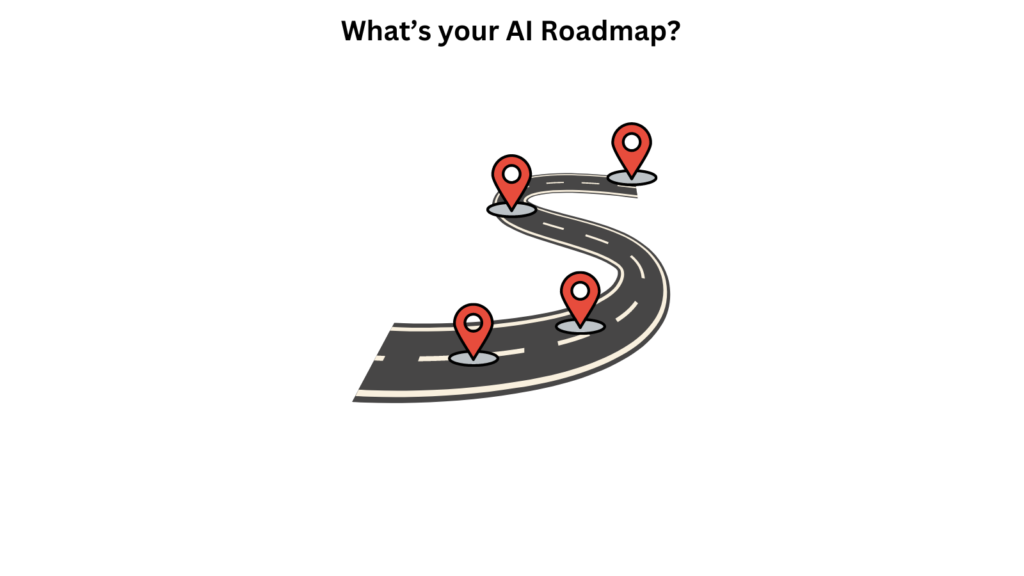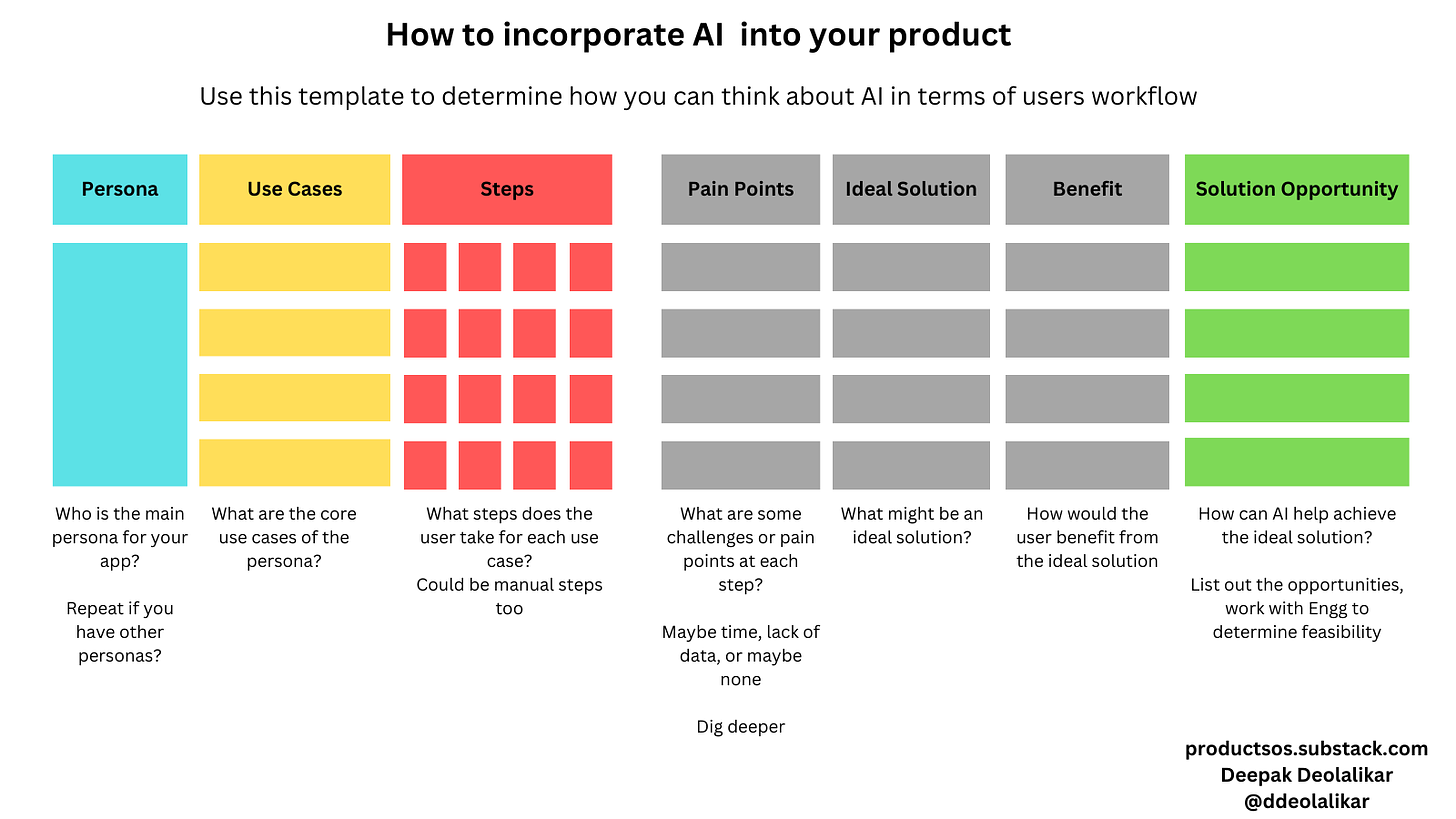Incorporate AI in your product, but not for the sake of it.

It’s a legit question and every company in the world is scrambling to get AI into their product. If your product is AI first e.g. video generators or image classifications, then you are looking out for the market/segment who will find the best use of your product.
But what if you are an existing product, and want to incorporate AI. Do you just blindly take the AI and start force fitting into your product?
I think there is a better way, the right way.
The User-Centric Approach
Just as mobile technology revolutionized accessibility and cloud computing transformed data storage, AI should enhance user experiences and streamline workflows. Instead of chasing the AI hype, product managers should focus on identifying pain points and inefficiencies within their users workflow.
Successful product development has always been centered around understanding user needs. In this new hype of AI, this principle remains as relevant as ever. Rather than being driven solely by technological trends, PMs should prioritize user-centric solutions.
Crafting Your AI Roadmap
So, how can product managers incorporate AI effectively?
Let’s say you already have a product, and now you have been given a mandate to incorporate AI.
You need a starting point.
As a product manager, you should already have a good map of your personas and their use cases. Let’s start from that point.
Who are the key personas for your product? List them out.
For each persona, what are the top use cases?
For each use case, what steps do users take? It could be manual steps or automated.
For each step, what are potential challenges, friction and pain points. It could be lack of time, or lack of data. Some of these are obvious pain points but sometimes we get blind sided and miss some clues. Even the customer is not aware they have a problem.
Dig deeper. This is a critical step.
What is the ideal solution from the users perspective?
What would be the benefits to the user if they had the ideal solution?
Finally, list out the solution opportunities including AI opportunities, that would help solve the challenge and get closer to an ideal solution.
This process is just the beginning to identify potential solution options using AI. What we are doing at this step is understanding the users workflow and jobs to be done, and identify where exactly they can benefit. The solution will eventually end up helping the user.
Once you have identified solution candidates, then you can work with your engineering team to determine feasibility and effort. If the solution is very difficult or expensive, then it may not be worth it.
This is taking the user centric approach of incorporating AI into your product.
Here is a template you can use to work through your AI opportunities.

Let’s try with an example in Sales CRM. You are a software company building a CRM application and your segment is companies that are sales driven.
Persona – A sales development rep (SDR or BDR) in a B2B sales led company
Use case
Find target prospects and set up discovery call, and advance them to opportunity stage
For the above use case, an SDR might do the following steps:
Prospecting – Based on the ICP, find out target companies to reach out to
Lead Qualification – Research the lead, and determine if they can be qualified for reach out based on certain criteria
Email Outreach – For each qualified lead, reach out and set up an appointment for a first discussion
Set an appointment – If the prospect responds, set up a mutually convenient time
Conduct discovery meeting and follow up – SDR takes the first meeting and sets up a follow meeting for next steps
For each step, figure out the pain point, ideal solution and benefits.
Let’s pick one step here, “email outreach”.Pain point – It takes time to craft a compelling first email that is personalized and is contextual to the company. Typically, an SDR will do some research on the company on google and Linkedin, find some recent news and see if something is relevant, and then write a personalized message. This is time they don’t have. They are required to do 50 -60 outreaches per day.
Ideal solution – Give the SDR all the relevant points related to the company they are reaching out to and create such a compelling message that the prospect feels you are on point
Benefit – SDR saves significant time. More importantly, they take a cold email and make it a warm email through the power of context, potentially shortening the sales cycle.
Solution Opportunities – List out the ideas that will help the SDR in each of the steps above :
Research – product should gather the relevant information about the prospects from public or internal sources, then distill them into actionable bullet points that may be relevant to our product. SDR saves significant research time.
Integrate with public information sources, crawl the website of the prospect or other public sources for any recent news. Gather the relevant content, and use AI to summarize key points.Draft an Outreach email – Use the above research and create a first draft of email that is highly personalized and is contextual. This will save the SDR time in crafting a good email.
AI can draft a personalized email that takes into account the voice of the SDR and company brand voice using existing content.
This was a simple example to illustrate the process of how you can think about incorporating AI in your product. The idea is to leverage AI for the purpose of helping the user, and not just for the sake of adding AI.
Do I need to know AI?
Now, onto the big question: Do PMs need to be AI experts?
Maybe not experts, but at least you should have a basic familiarity of its capabilities.
Let me explain.
To my earlier point, you are uncovering challenges your customers are facing.
Now, if you have some knowledge of the capabilities of AI and what types of problems it can solve, then you can pattern match.
AI can do a number of things like :
Generate content using LLM
Generate images or video or other media
Analyze data or interpret data
Categorize or classify content
Analyze sentiment and so on
Let’s say you find out from your customers that analyzing sales call recordings between sales reps and customers are time consuming and sales managers cannot effectively use the recordings to identify which sales rep could use coaching. You have some AI knowledge that AI can interpret voice and sentiment and figure out how sales reps performed.
Now you have a problem statement and a solution that you vaguely know could work.
If you did not know the capabilities of AI, you would have likely dismissed the problem as something not solvable.
The goal of having AI knowledge is to expand your own sense of possibilities so you can uncover those hidden problems for customers and solve them.
Conclusion
AI represents both a challenge and an opportunity for product managers. By adopting a user-centric approach, PMs can influence their AI roadmap effectively and create products that truly make a difference to the users and customers.

